#daicon iii
Explore tagged Tumblr posts
Photo

Studio Gainax
#anime#mecha#studio gainax#hideaki anno#neon genesis evangelion#nadia secret of blue water#gunbuster#royal space force#daicon iii#daicon iv
1K notes
·
View notes
Text
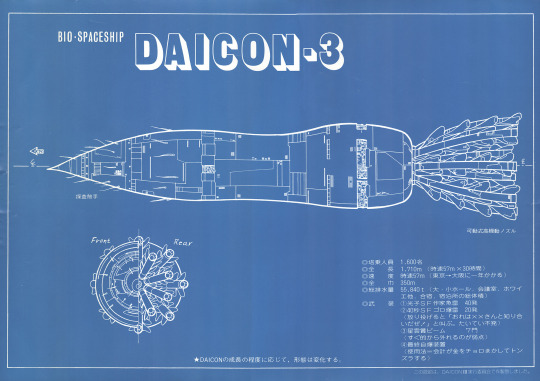
DAICON III poster
50 notes
·
View notes
Photo


The new key art for Daicon V just released 👀
(style practic with Tumble and Aggie)
22 notes
·
View notes
Text
Bunny Day? 🐰 I doodled up the first thing that popped into my head. I hear ELO with it. #Daicon #80s #japanesecomiccon #indieanime

9 notes
·
View notes
Text




Star Trek x Gainax references (Re: Cutie Honey, ST-TNG: Peak Performance, Hanamaru Kindergarten, Daicon III)
9 notes
·
View notes
Text
Zelda Wynn Valdes: The Mother of Bunny Girls

View On WordPress
#anime bunny girls#anime fanservice#Black American#Black Creators#Black Designers#Black History#bunny girls#Daicon III#daicon IV#fashion#FBA#Hugh Hefner#Victor Lowens
15 notes
·
View notes
Text
Bro nothing could go as hard as Daicon III and IV in 2023 and get away with it.
2 notes
·
View notes
Video
youtube
Daicon III Opening Animation ダイコンフィルム ダイコン・スリー アニメ
1 note
·
View note
Text



I recently watched the two short 12mm fan that opened the the Japanese conventions, DAICON III and IV, films from DAICON FILM (ダイコンフィルム)
0 notes
Text
they had this like furoshiki with the eva episode 1 title card on it but I wish theyd done that for a shirt instead bc the title card with the iconic eva font fucks severely but I don't need a furoshiki
#i also dont need a shirt but i bought the daicon iii one anyway. no regrats#and the book they had which im gonna regret bc its heavy but its like 300 pages of extremely detailed production material and commentary#for what is at this point like 30 bucks
0 notes
Text
Animation Night 168: when Anno was young...
Animation Night has been getting kind of short lately, huh? Gone are the days when we'd marathon three films in a night... for now. Next week is Animation Night 169, and @mogsk has been helping me cook up quite a program to act as a sequel to Animation Night 69. It's time to find out just how much Twitch will let me get away with.

But what about tonight? Well, tonight I figure since we've been talking about Anno this week, it might be fun to put a short program together to show some of his earlier works - as an animator. Truly long-time viewers might remember watching Royal Space Force: The Wings of Honneamise and Gunbuster all the way back on Animation Night 29. But this isn't exactly a reprise of that. We'll revisit Gunbuster on another day. Tonight the subject will be Metal Skin Panic: Madox-01 and Royal Space Force: The Wings of Honneamise.
So here's a brief timeline (largely leaning on SteveM's video here lol). Anno's work on the Daicon III film got him a foot in the door in the industry by impressing Studio Nue enough to invite the Daicon III team to work on Macross. Nue were also in large part fans turned animators, many of them Gundam doujinshi artists. Anno joined what became known as the 'mecha unit' at Artland, working alongside the legendary Ichirō Itano - where he was known for walking around barefoot and talking loudly to himself. A couple of years after Daicon III, the Daicon team reassembled to create a followup film, a lavish effort packed with a ludicrous density of pop-culture references.

Not long after this... Anno dropped out of university, and started bouncing between animation studios in Tokyo. The next big break came when he applied to work on Miyazaki's Nausicaa, a production which was rapidly transforming the outsourcing-oriented studio Topcraft into a gathering of some of the best animators in the business. At Topcraft, Anno's reputation was 'the primal man', sleeping under his desk with the cockroaches and not wearing shoes. But despite his inexperience, he made a good impression on Miyazaki, who assigned him the crucial finale cuts of the God Warrior.
Here we see what is sometimes called the 'Anno explosion', where the laser sweeps across and a massive explosion follows after a beat. Anno was able to handle the complex shading and multiple layers with aplomb...

...if not entirely on schedule. (One anecdote has that he tried to use his work on this sequence to pick up women. Which, to be fair...)
So in the mid 80s, Anno has established himself as a skilled mecha animator who can handle some ludicrously technical scenes. Besides Nausicaa and Macross, you will see him in Megazone 23 Part I, Giant Robo: The Animation, Baoh, Birth - and even Grave of the Fireflies. Any time you wanted mechanical animation or explosions, Anno was definitely a guy to get on the phone. And of course one of his most significant projects was on SDF Macross: Do You Remember Love? where he animated... you guessed it, lots of missiles and explosions.
With all this experience under his belt, Anno was almost ready to return to the newly founded Gainax - what had been Daicon Film. But first - lets check out Metal Skin Panic! MADOX-01. This OVA, made at AIC and Artmic - who made so many of the classic OVAs from this period, it's nuts - was the directorial debut of Shinji Aramaki, whose later CG films we covered back on Animation Night 152. Even back in 1987, Aramaki's love of intricate mechanical detail was on full display - and luckily Anno was on hand to make that vision work, along with the even younger 14-year-old prodigy Kōji Akimoto. (I'm not entirely sure what became of Akimoto. He only has one other anime credit, much later.)

Anno's scenes here prefigure the later similar hyper-detailed mechanical animation in works like Patlabor 2. But what's this OVA actually about? Well, it's a pretty simple story: a mechanic gets trapped inside a mecha suit, and accidentally ends up on a rampage as he's chased by the military (remind you of Roujin Z? or Stink Bomb in Memories?), hoping to unite with his girlfriend Shiori. Ultimately he ends up in a confrontation with an American soldier Lieutenant Kilgore. They fight! Really, we're here for the animation.
So, that brings us to Royal Space Force. The origin is kinda messy. To make a long story short, Daicon Film approached Bandai, hoping to make an OVA based on new Gundam kits. Bandai (and more specifically Shigeru Watanabe) said no to Gundam, but they were interested in this idea for a scifi OVA - and they'd drop them a cool three and a half million dollars to make a film to rival Nausicaa. (Apparently Mamoru Oshii's approval played a big part in that).
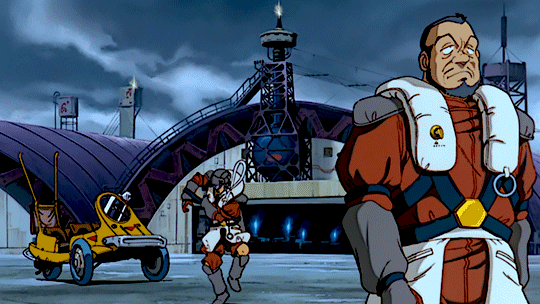
So Royal Space Force, what a film. There truly isn't anything quite like it, either in Gainax's oeuvre or anime at large. The closest thing I could compare it to might be the near-future anime series Planetes, which similarly focuses on realistic spaceflight in the context of war and geopolitics - but the tone of these two stories is markedly different. Of all things, it actually most makes me think of the works of Le Guin.
Honneamise is set on a fictional world vaguely resembling eartly 20th Century Earth, in which a country embroiled in war is putting together its world's first, threadbare space programme. It follows aspiring astronaut Shirotsugh Ladatt, who missed his chance to be a pilot and ended up in the sideshow space programme. But he meets a religious girl named Riquinni Nonderaiko who convinces him of the potential of spaceflight in bringing peace to the world.
But this idealism clashes with the reality of a world where the space programme is viewed cynically, a means to an end, with protestors questioning the cost of it and the higherups seeing the rocket launch merely as a means to set up an ambush against their enemies. Shirotsugh increasingly doubts whether the space programme is worthwhile at all. And he himself is definitely not a fully sympathetic protagonist; in one particularly uncomfortable scene he attempts to rape Riquinni (which in its framing reminds me of a similar moment with Shevek in The Dispossessed).

The film is as much as anything an insane work of worldbuilding, full of constructed cultures and small details that sit just a little askew of Earth while still feeling incredibly grounded. The animation in this film is fucking insane - not just Anno's incredible rocket launch and flight sequences, based on a research trip to the States where he watched the Shuttle go up for real - but throughout, in its character animation, it anticipates the 90s 'realist' approach to stylisation. It's just full of loving detail, wordlessly conveying so much about its setting.
Of course, such an ambitious film faced a troubled production. Between the inexperience of Daicon Film Gainax and the difference between what this film was going for and what everything else was going for, and production meddling... it was a mess. Big name composer Ryuichi Sakamoto was pulled in to score the film, won over by its storyboards, but ended up clashing over the timing of scenes, and in the end his score was chopped up and rearranged.
And for their part, Bandai started getting antsy and attempted to impose changes, like insisting on tacking on the subtitle 'The Wings of Honneamise'. They wanted to cut the runtime, cut elements that didn't have toy potential, and so on. They wanted something that would sell toys... and got a deliberately slow, moody art film that leans heavily on nonverbal storytelling.

So it's a weird one... and it didn't sell in its theatrical run. But you know, all those elements that made it a hard sell at first are a perfect recipe for 'cult classic', and for that reason, Honneamise is still remembered today.
In any case, back to Anno. He delivered the most impressive animation of his career. The rocket launch in meticulous detail of course, but equally scenes of planes to rival any in Miyazaki's films (or The Cockpit [AN146]). Of course, he didn't carry it alone! The great realist Toshiyuki Inoue, who'd later be famous for his work at Production I.G. such as Ghost in the Shell, was on it, working for example on astonishingly busy crowd scenes which apparently took a full month to animate. And animators like Fumio Iida, Nobuteru Yuki and Noriasu Yamauchi, brought some of the best work they'd ever done.
All in all, there's nothing quite like Royal Space Force, before or since. So I'm really looking forward to seeing it again.
Animation Night 168 will go live shortly; films will begin at 11pm UK time and continue to about 2am UK time. (Apologies it's so late once more, my sleep is proving troublesome to shift.) We will as usual be at twitch.tv/canmom. I hope to see you there, it's gonna be a real sakuga feast tonight!!
#animation night#anime#animation#hideaki anno#royal space force: the wings of honneamise#metal skin panic: madox-01
23 notes
·
View notes
Text
Princess Maker 2 Regeneration coming to PS5, Switch on December 21 in Japan
Gematsu Source
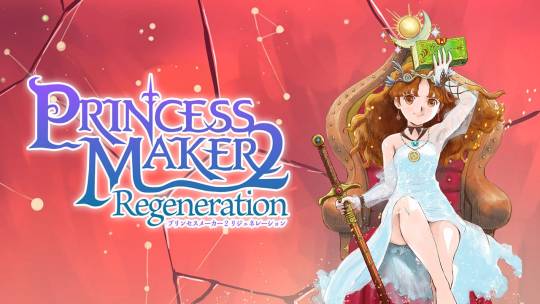
Bliss Brain has announced Princess Maker 2 Regeneration for PlayStation 5, PlayStation 4, Switch, and PC (Steam). It will launch on December 21 with English, Japanese, Korean, Traditional Chinese, and Simplified Chinese language support.
In Japan, physical standard and limited editions will also be released for PlayStation 5 and Switch. The standard physical edition will be priced at 4,400 yen. The 8,580 yen “Special Pack” will include exclusive packaging featuring an illustration drawn by Takami Akai, an art book, and a five-disc soundtrack featuring music from the PC-98, DOS/V, TOWNS, and Refine versions of the game, as well as an arranged version for Regeneration. Pre-orders are available now at retailers such as 7net Online Shopping and Biccamera.

Here is an overview of the game, via its official website:
About
Princess Maker 2 is a childrearing simulation game in which the player experiences being the father to a daughter granted to them by the stars. They raise the girl for eight years, from ages ten to eighteen. Your daughter grows up to be an adult through various experiences in the game. The girl’s dream is to become a princess, but a wide variety of opportunities await depending on how you raise her. What kind of dream will you make come true for this girl?
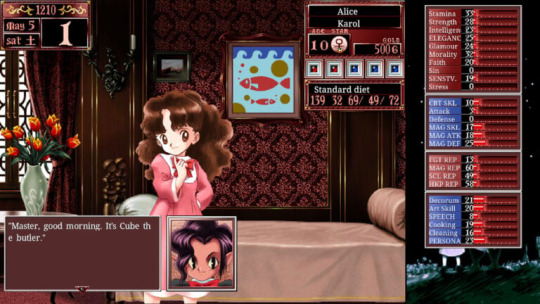
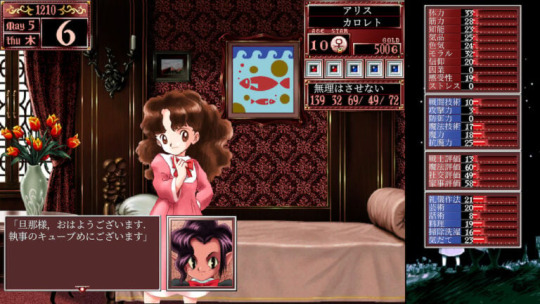
Princess Maker 2 Celebrates Its 30th Anniversary This Year
This year marks 30 years since the original release of Princess Maker 2 (PC-9801 version) in 1993. We invite you to experience the new and improved Princess Maker 2 on its 30th anniversary.
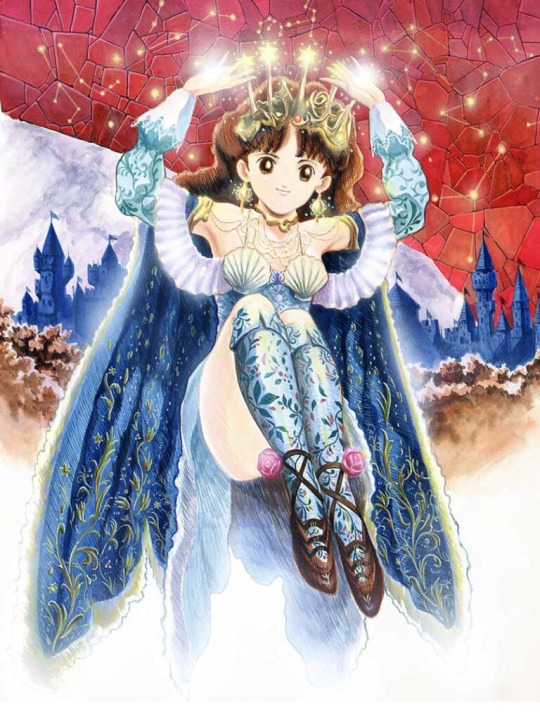
—Message from Takami Akai
I am deeply grateful to see that “Princess Maker 2”, which came out 30 years ago, is still so beloved by so many fans that we can release a new version. This time I was finally able to redo the graphics, which I had always wanted to do. Please enjoy the newly redrawn vacations and endings. About Takami Akai: Born 1961. While still enrolled at Osaka University of Arts, he made his debut with the DAICON III Opening Animation. As one of the founding members of GAINAX, he has worked on anime and tokusatsu shows, as well as games and events. His most noteworthy works include the Princess Maker series, Gurren Lagann, and Dai Tokusatsu Negiman.
Redrawing the Graphics
This title is based on Princess Maker 2 Refine, which was released in 2004. Especially important graphics were redrawn by Takami Akai in a style similar to the PC-98 version. The graphics are drawn in high resolution befitting modern game systems, with a commitment to quality in the details.
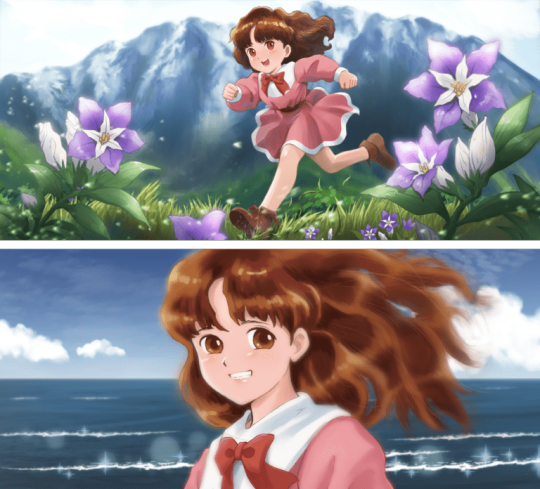
—Left: Regeneration, Right: Refine

Opening Movie Added
An opening movie produced by Yonago GAINAX has been added. The animation, which was made by a team led by Takami Akai, allows new “father” players to get a sense of what a future raising their “daughter” is going to be like.
Knowing How Your Daughter is Doing is the First Step in Raising Her
This title is a social simulation, so it is very important to always be aware of your daughter’s status and use this to raise her. In Regeneration, parameters for assessing your daughter’s status are always available, so you can check on her at a glance. Check what you should do for your daughter’s future, and raise her carefully.
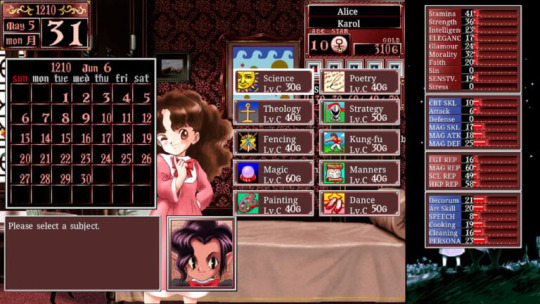
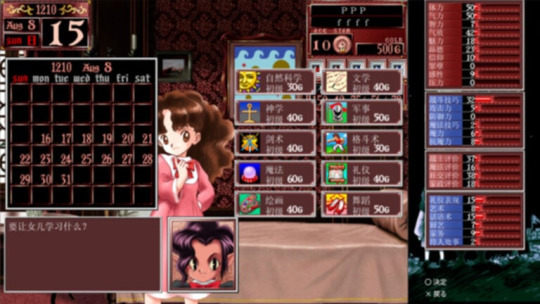

View a set of screenshots at the gallery.
#Princess Maker 2 Regeneration#Princess Maker 2#Princess Maker#Bliss Brain#PS5#Nintendo Switch#Gematsu#Hoping for a localization announcement
35 notes
·
View notes
Text

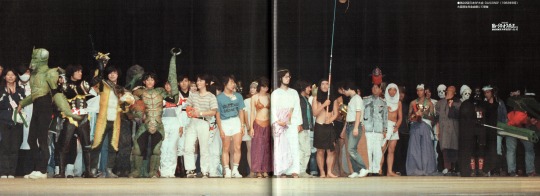
DAICON III & DAICON IV cosplay gathering
#convention#anime#general products#gainax#daicon#genepro#daicon iv#daicon 4#bunny girl#animation#daicon iii#daicon 3
23 notes
·
View notes
Text
"What Was the Phenomenon Called 'Evangelion'?" - Additional Thoughts by Sci Fi Critic Nozomu Omori

[Comic Box 1997 End of Evangelion Special Archiving Project - Entry #2]
There is no amazing art this time, but I think that is compensated for by a really hitting essay by critic and science fiction author Nozomu Omori, an otaku from one of the earliest generations to identify that way. Omori digs into how Evangelion is a cipher for the identity of each member of the audience due to how many influences are stuffed into its box, what cipher reveals about his own identity, and how Evangelion’s craft as a show allowed it to be so revealing to so many different people.
This essay is another time-capsule from 90’s Japan, but for media discourse as opposed to society - Omori is a devotee of sci fi literature, and sees a rising generation of otaku who no longer hold that literature to be quite as integral to anime’s lineage, something he wants to both combat and self-affirm. This lineage was extremely strong in anime up through the 80’s and into the 90’s, so much so that a distinction between anime and sci fi fans in the early days of anime didn’t exist; Hideaki Anno’s infamous DAICON III and DAICON IV short animations were named after their host convention, the Nihon SF Taikai, which as the name suggests was billed simply for sci fi fans. These sci fi origins were intensely international, as well - to Omori, Arthur C Clarke and the 60’s/70’s “New Wave” movement are just as critical ingredients to Eva as Gundam or Macross.
This is a lineage that hasn’t disappeared, but faded from the zeitgeist; sci fi and anime fans are no longer synonymous, cyberpunk is not a pillar of the anime market, and the literary sources going to anime productions range far wider. But Evangelion’s influence has not faded, and is absolutely still shaping anime culture today; and Omori shows Eva serves as vessel through which these works of foundational sci fi can still transitively be felt.
Other fun points:
Omori mocks Anno for his ‘taking off his pants’ approach to discussing Evangelion, which is a metaphor Anno has used on multiple occasions to describe works that fully express the true interests of the creator. The specific reference Omori is making is likely to an interview from “Schizo Evangelion”, published March 1997, though funnily enough Anno is referring to Miyazaki “taking off his pants and showing that his dick was erect” via the Nausicaa manga, and how he hopes he will do the same in the upcoming Princess Mononoke. It’s an S-tier quote from Anno and Omori’s mockery of it is equally hilarious.
Omori is another author who centers Eva’s appeal in how the audience “enjoyed not enjoying the work”. Its an idea that comes up a lot in this magazine and contemporary interviews; its not an unknown idea in film/media or anything, but I do think Evangelion is one of the first anime to embody this liminal space. Its a concise way of summarizing why it hit audiences so hard.
The author ends his highly personal, serious analysis of End of Evangelion by saying “By the way, if you don’t like the movie, try the Girlfriend of Steel video game tie-in”. I do not know if this is a joke and I don’t think I will ever find the answer that question.
You may find the full essay translation at the link below:
34 notes
·
View notes
Text
ALSO ALSO daicon iii & iv are on the internet archive now for anyone interested :]
2 notes
·
View notes
